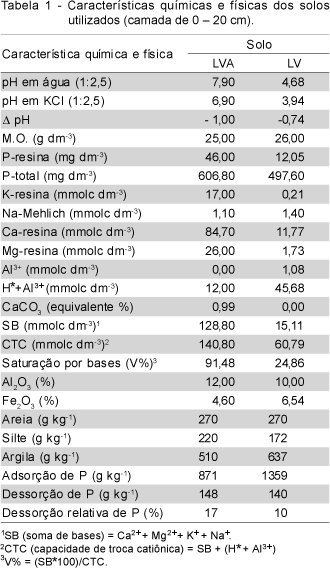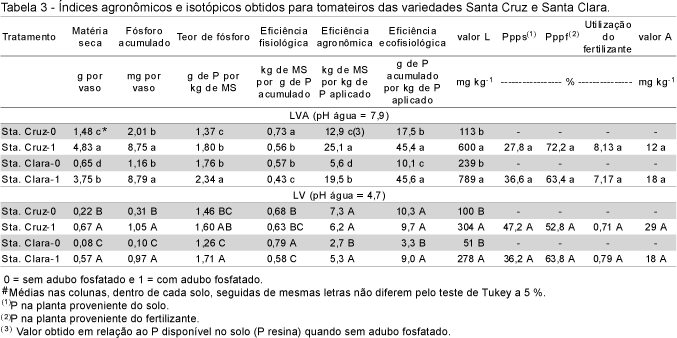Phosphorus, despite its relatively low content in most crops is the most applied nutrient as mineral fertilizer and is an important fraction of the cost of agricultural production. Knowledge of the differences among plant varieties in relation to soil and fertilizer P uptake is fundamental for breeding improvement programs and management of phosphate fertilization. Differences in P uptake from soil and fertilizer (triple superphosphate), soil P availability through L and A values, and the physiologic, ecophysiologic and agronomic efficiencies of two commercial tomato (Lycopersicum esculentum Will) varieties, Santa Clara and Santa Cruz, were evaluated by the 32P technique. The experiment was carried out in a greenhouse, using two soils, a dystrophic Dark Red Latosol and an eutrophic Red Yellow Latosol, and two P fertilizer application rates (0 and 31.1 mg kg-1). Plant responses were markedly different in the two different soils. There was a clear increase in dry matter production, L value, and P uptake from the soil due to fertilizer application, but not in the A values. Differences in dry matter production, P concentration and physiologic, ecophysiologic and agronomic efficiency between varieties differed more for the eutrophic Red Yellow Latosol. There was no difference between the two varieties in relation to the uptake of soil and fertilizer P, L and A values.
Licopersicum esculentum; A value; L value; 32P; radioisotope



